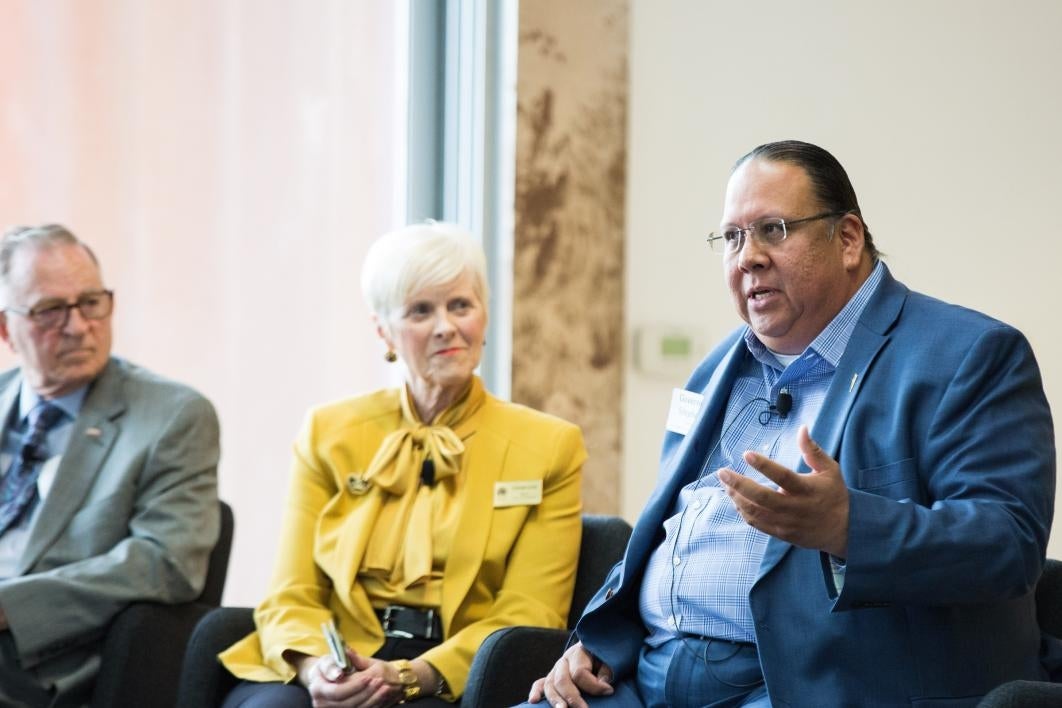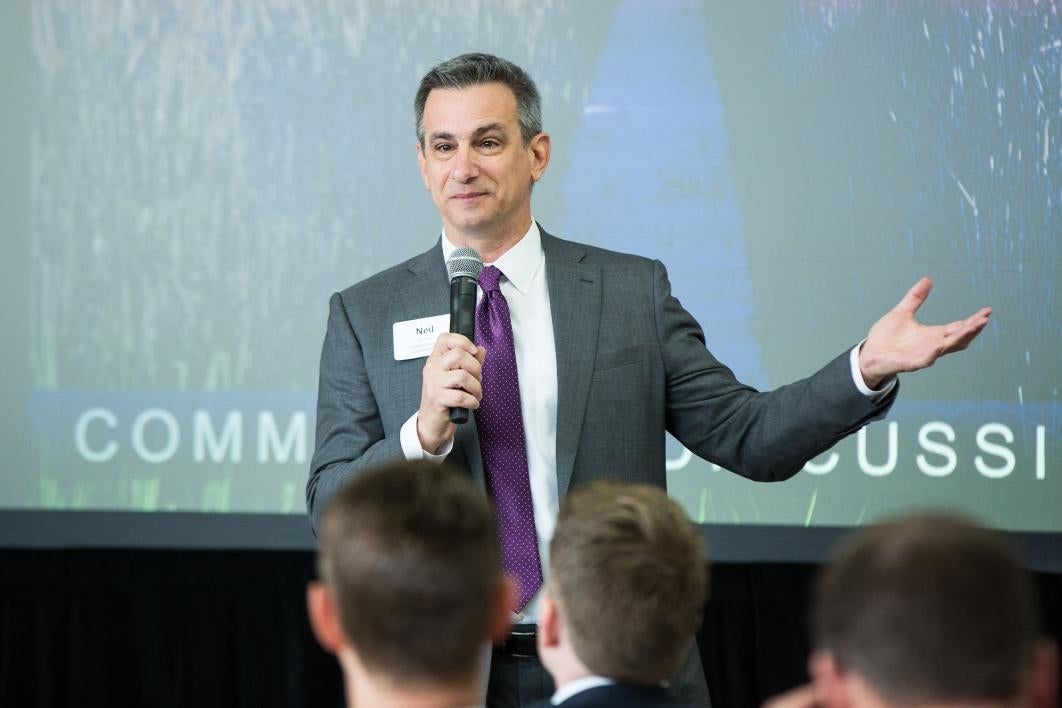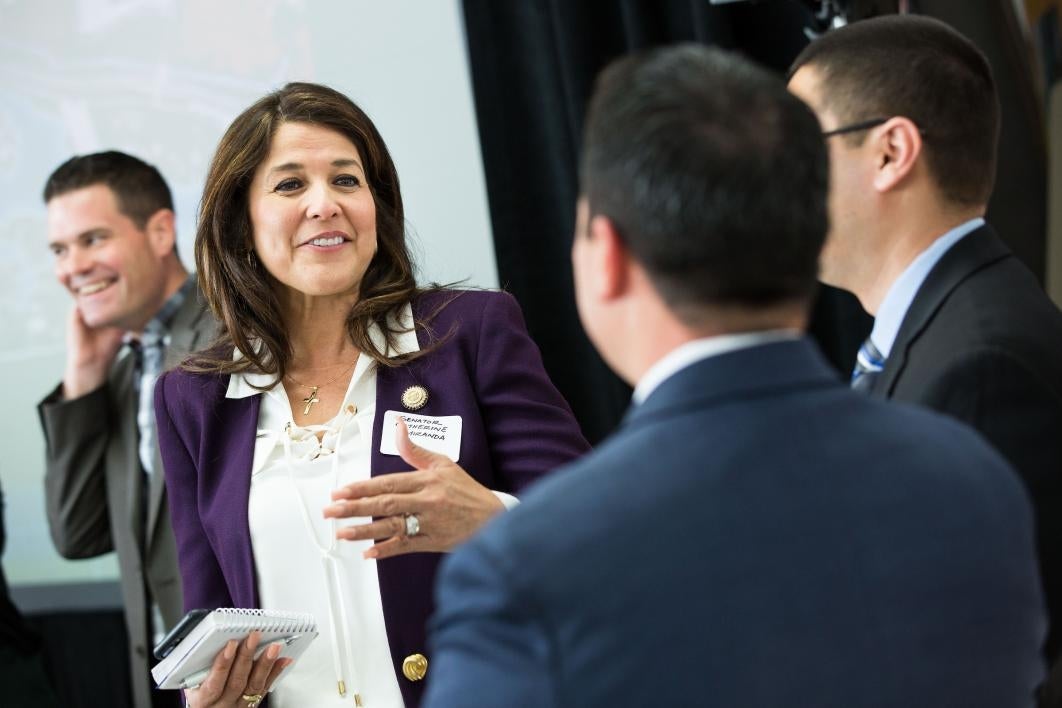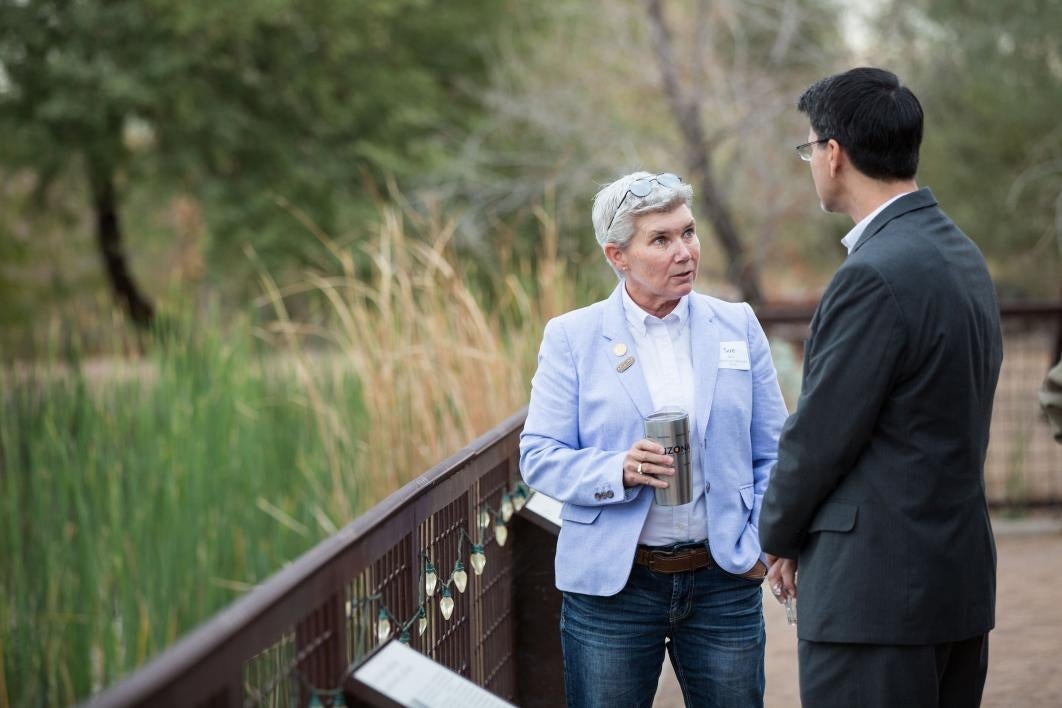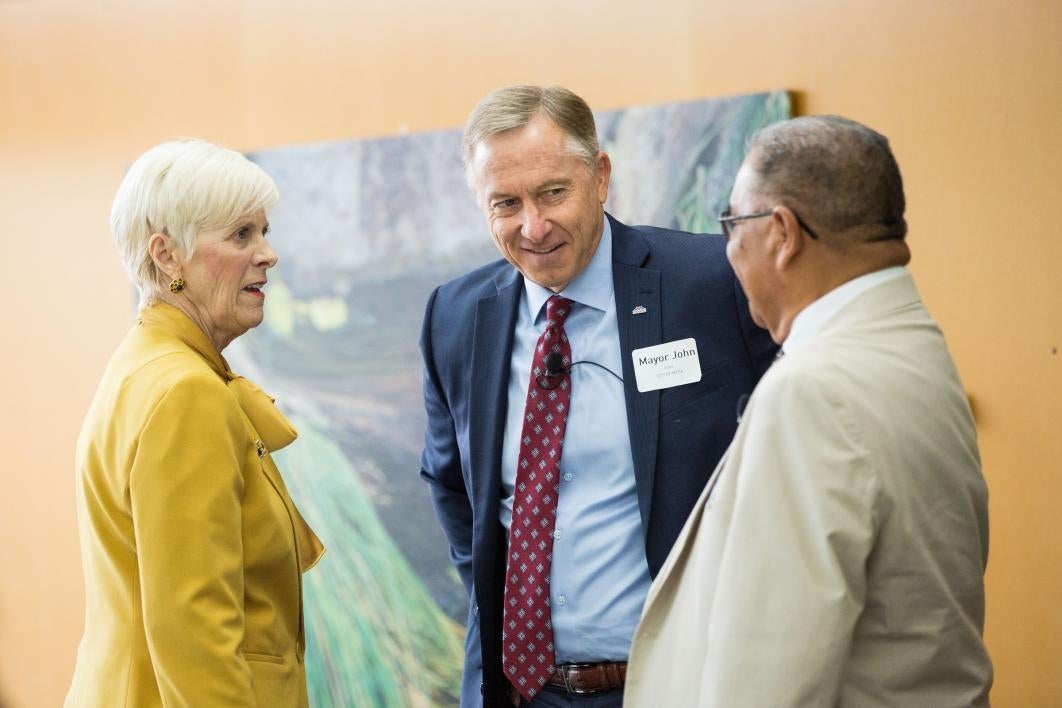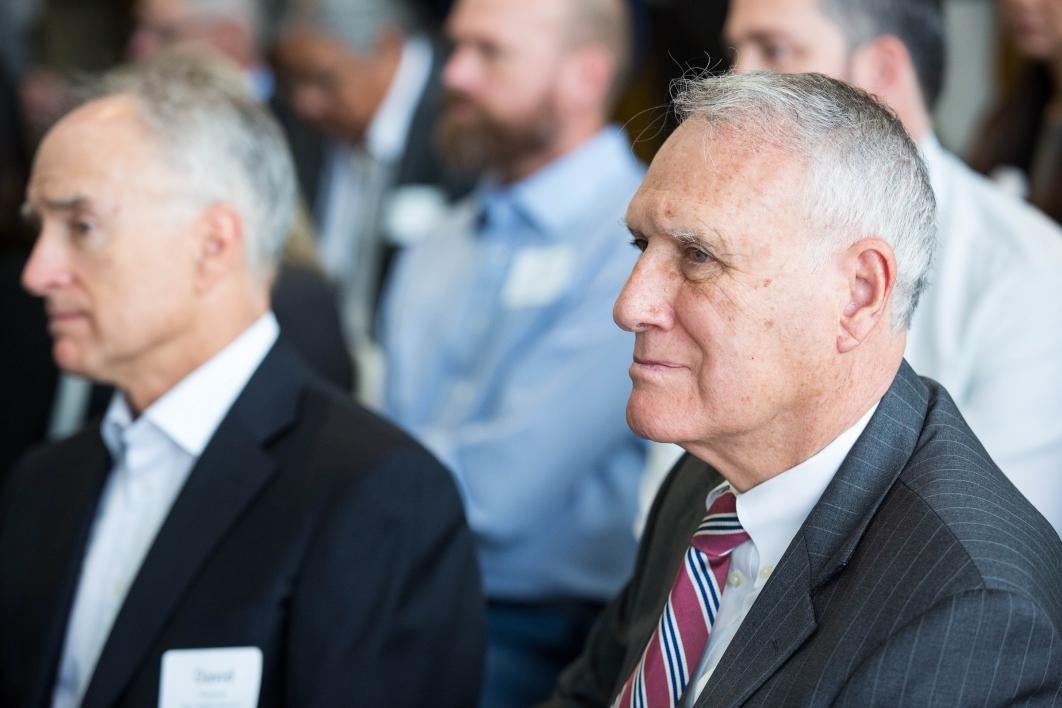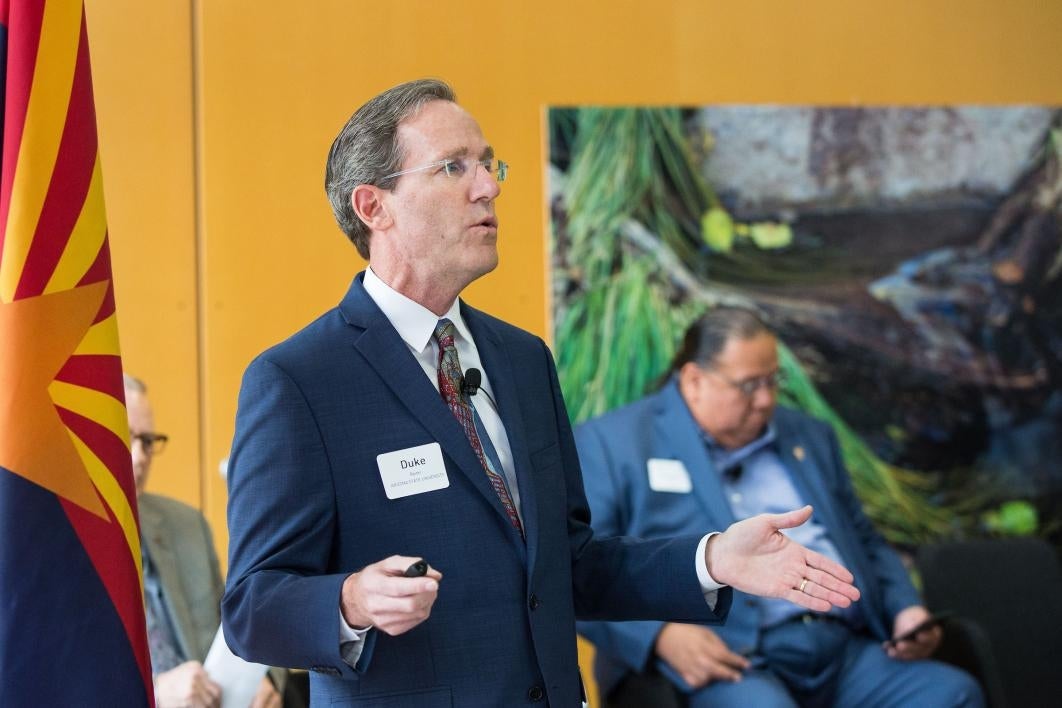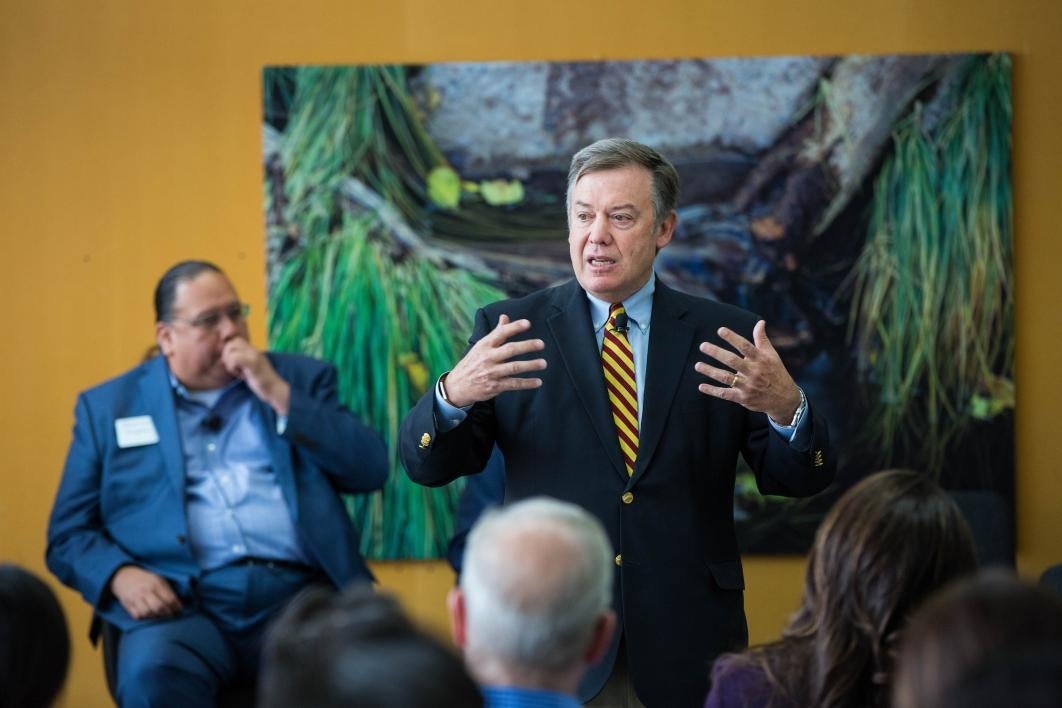Arizona State University unveiled its role in helping create a new future for the Salt River to a group of Valley civic and business leaders Friday morning.
The Rio Salado plan will transform the entire Salt River bottom through metro Phoenix into an urban and environmental amenity.
The project, which will run from Granite Reef Dam in the East Valley to the Tres Rios Wetlands in Buckeye, will be “multigenerational,” said Duke Reiter, senior adviser to ASU President Michael Crow.
“These things take time, but somebody needs to tee them up and get them going,” Reiter said.
ASU is building a studio for a “reservoir” of projects. Rio Salado will utilize much of the expertise at the university, including hydrology, biology, design, architecture, planning, finance and sustainability.
Reiter stressed it won’t simply be a continuation of Tempe Town Lake, but a balance between the two developed areas in the riverbed now: the environmental amenities at the Nina Mason Pulliam Rio Salado Audubon Center in Phoenix, and the commercial/recreational nature of Tempe Town Lake.
“It’s not Tempe Town Lake forever,” he said.
ASU President Michael Crow explained why the university is part of the effort.
“We see that this project has unbelievable potential for the future,” Crow said. As the Valley grows, a place will be needed for millions to engage, not simply thousands. The university will help create the future for the 45-mile stretch of river.
“We can see that having a broader impact” on the Valley, he said. “How will we be a part of this project for 50 years? One hundred years?”
The idea for Tempe Town Lake was launched by ASU in 1967, he noted.
Valley leaders expressed support for the vision.
“Water connects us all,” Gila River Indian Community Gov. Stephen Roe Lewis said. “The river connects us. ... This is deeply moving to me and my people as well.”
Buckeye Mayor Jackie Meck said the Valley’s natural beauty will be restored when people can walk by the river and gaze at the mountains.
Meck grew emotional quoting a Greek proverb: “A society grows great when old men plant trees whose shade they know they shall never sit in.”
A significant number of stakeholders have announced their support for the proposal. They include the mayors of Mesa, Scottsdale, Phoenix, Avondale and Buckeye; the Arizona Chamber of Commerce; the Gila River and Salt River Pima-Maricopa tribes; APS, SRP, the EPA, the Army Corps of Engineers and all Arizona environmental groups.
Reiter cited numerous roadblocks, including funding, water supply and environmental concerns, among others.
“These issues will always persist,” he said. “We’ll overcome them.”
Outside in a pond beside the Nina Mason Pulliam Rio Salado Audubon Center, a beaver splashed in the water.
Top photo: Attendees stand outside the center prior to a conversation on the Rio Salado Project on Friday morning at the Nina Mason Pulliam Rio Salado Audubon Center in Phoenix. Photo by Deanna Dent/ASNow
More Environment and sustainability

Rethinking Water West conference explores sustainable solutions
How do you secure a future with clean, affordable water for fast-growing populations in places that are contending with unending drought, rising heat and a lot of outdated water supply infrastructure…
Meet the young students who designed an ocean-cleaning robot
A classroom in the middle of the Sonoran Desert might be the last place you’d expect to find ocean research — but that’s exactly what’s happening at Harvest Preparatory Academy in Yuma, Arizona.…

From ASU to the Amazon: Student bridges communities with solar canoe project
While Elizabeth Swanson Andi’s peers were lining up to collect their diplomas at the fall 2018 graduation ceremony at Arizona State University, she was on a plane headed to the Amazon rainforest in…



